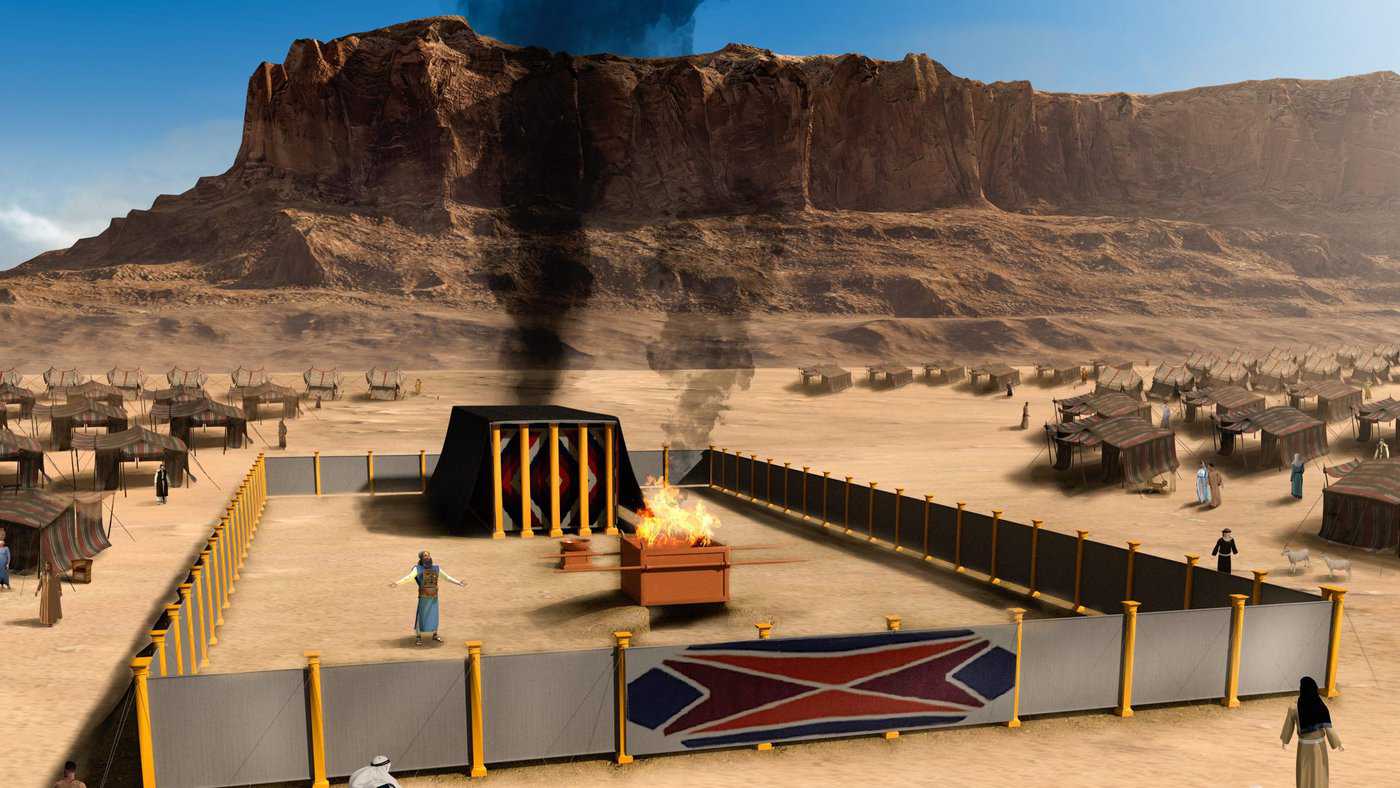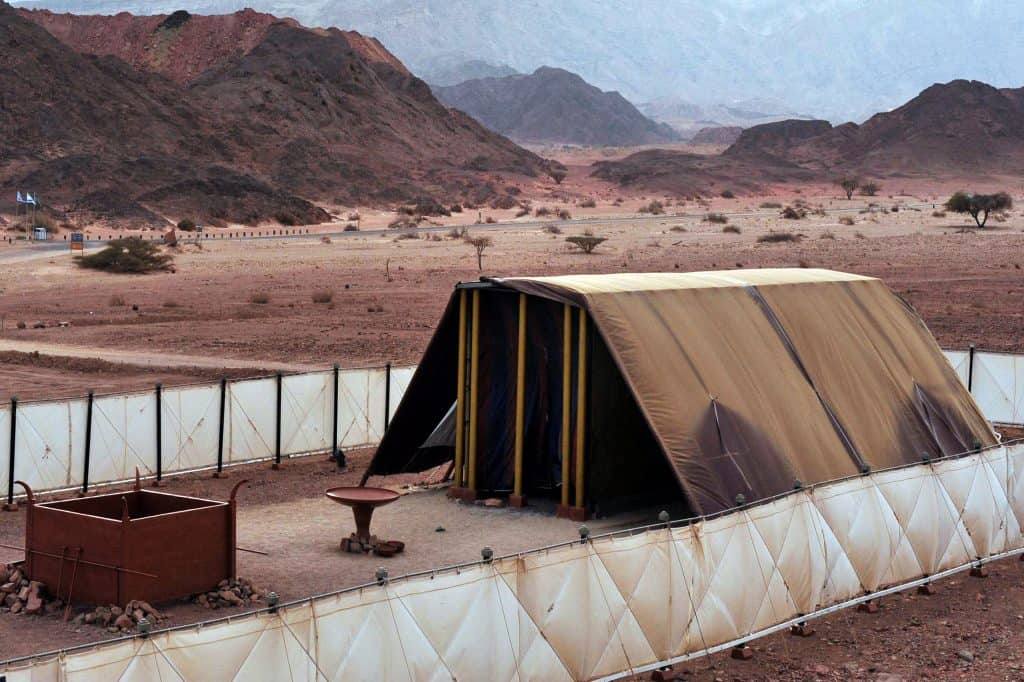The Tabernacle, a sacred and mobile dwelling place, occupies a central role in the biblical narratives of the Israelites. This divine structure, imbued with profound symbolism and significance, journeyed alongside the people of Israel during their wanderings in the wilderness, serving as a powerful testament to faith, guidance, and divine presence.
The Tabernacle’s Design and Purpose:
The Tabernacle, as detailed in the Book of Exodus, was a meticulously designed sanctuary at the heart of Israel’s spiritual and communal life. Its construction was overseen by Moses, who received precise instructions from God on its dimensions, materials, and purpose.
The Ark of the Covenant

Key Features:
Structure: The Tabernacle consisted of a portable tent crafted from fine linen and animal skins, with a framework of acacia wood. It was divided into two main sections: the Holy Place and the Holy of Holies.
Ark of the Covenant: Housed within the Holy of Holies was the Ark of the Covenant, a sacred chest containing the tablets of the Ten Commandments. This represented the covenant between God and the Israelites.
Altar of Incense: In the Holy Place, there was an altar of incense, a table for the showbread, and a seven-branched golden lampstand known as the menorah.
The Tabernacle’s Journeys:
The Tabernacle’s mobility was a distinctive feature. It accompanied the Israelites during their 40-year sojourn in the wilderness, signifying God’s continuous presence and guidance.
1. Journey from Egypt: After the Exodus from Egypt, the Tabernacle was erected at various locations during the Israelites’ journey towards the Promised Land. It served as a place of worship, sacrifice, and spiritual renewal.
2. Promised Land: Upon entering the Promised Land, the Tabernacle temporarily found a home in Shiloh, where it remained for several centuries. It continued to play a central role in Israelite religious life.
Timna Park

Symbolism and Significance:
Ultimately the Tabernacle was more than a physical structure; it symbolized God’s dwelling among His people. Its construction, rituals, and ceremonies conveyed deep spiritual truths:
Divine Presence: The cloud of God’s presence, the Shekinah, would descend upon the Tabernacle, signifying God’s dwelling amid His people.
Atonement and Forgiveness: The rituals performed at the Tabernacle, including offering sacrifices, symbolized the need for atonement and forgiveness of sins.
Unity: The Tabernacle was a unifying force among the Israelites, providing a central place of worship and a tangible reminder of their covenant with God.
Legacy:
So, the Tabernacle’s significance extended beyond the wilderness wanderings. Its design and rituals influenced the construction of the First Temple in Jerusalem and, later, the Second Temple. The concept of a sacred dwelling place for God continued to hold profound meaning throughout Jewish and Christian history.
Last, the Tabernacle’s journeys were journeys of faith, a constant reminder that God was with the Israelites every step of the way. It remains a symbol of God’s abiding presence and a testament to the enduring power of faith and commitment in the face of adversity.







